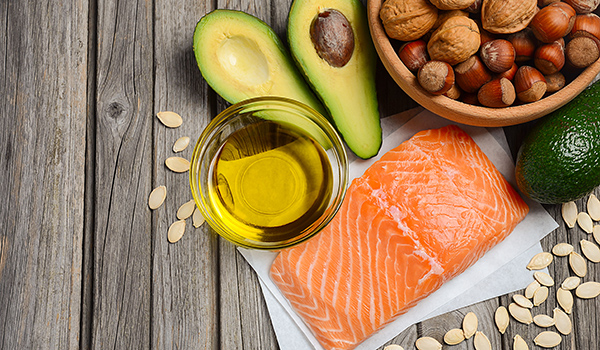
Fats have a bad reputation but not all fats affect us in the same way. In fact, some fats are not only good for you but also necessary to create a balanced diet and live a healthy lifestyle. From regulating body temperature to protecting organs, fats have an important role to play in your body. However, it’s important to understand the different types of fats and how they affect your health in order to make the best decisions.
Let’s break down the three main types of fats:
Saturated – These are the fats that you want to avoid as they raise the LDL cholesterol, also known as bad cholesterol. Too much saturated fat can raise your risk of heart disease and stroke. You’ll find saturated fats primarily in fatty meat and poultry skin as well as dairy products and processed foods. It’s also found in coconut and palm kernel oils. As a general rule of thumb, saturated fats are solid at room temperature.
Unsaturated – Both monounsaturated and polyunsaturated fats are the good, healthy fats that actually lower the bad LDL cholesterol. These fats are found in nuts, seeds, oily fish, avocado, non-hydrogenated margarine and a variety of oils, including canola, olive, peanut, sesame, soybean and sunflower. Unlike saturated fats, unsaturated fats are typically a liquid at room temperature.
Trans – These fats are considered the worst type as they not only raise the LDL cholesterol but also lower the HDL cholesterol, which is the good kind of cholesterol. While trans fats are found in some meat, particularly beef and lamb, they’re most commonly found in baked goods where vegetable oil has undergone a partial hydrogenation process, which means it was a liquid that has turned into a solid. While it may add flavor to food, it also raises your risk of heart disease. Many products have begun to cut trans fat due to the backlash in recent years.
How Much Fat Should You Eat?
The amount of fat necessary varies by the individual and their energy level. Generally, adults should aim for 20 to 35 percent of their food to be fat-based. However, less than 10 percent should come from saturated fat and less than one percent from trans fats. Based on a 2,000 calorie diet, this means that the average adult should aim for a total of 65 grams of fat per day.
How Can You Make Sure You’re Eating the Right Fats?
Since the main goal is to reduce the consumption of saturated fats and replace them with unsaturated fats, you should seek healthy alternatives. For example, you can swap butter for margarine or even use avocado as a spread instead. Switching from whole milk to reduced fat milk and low fat versions of other dairy products, like yogurts and cheeses, are also effective ways of lowering the amount of saturated fats you eat.
To further lower your intake of saturated fats, make sure to trim the fat off of your meat and remove the chicken skin. Processed meat, like sausage and deli meats, are also known for their high levels of saturated fats as well as a high sodium level so it’s best to limit them. Instead, choose a fatty fish, like salmon, trout or sardines, at least twice a week for a healthy dose of omega-3 rich fat.
Always read nutrition labels to understand what is in your food and aim for items with no trans fat.
Understanding the different types of fats
By simply paying attention to the different types of fats, you can create a diet that provides you with the right kind of nutrients. Remember, there’s no need to completely remove fat from your life as long as you focus on the healthy, unsaturated variety and reduce the amount of saturated and trans fats to lower your risk of heart disease.

